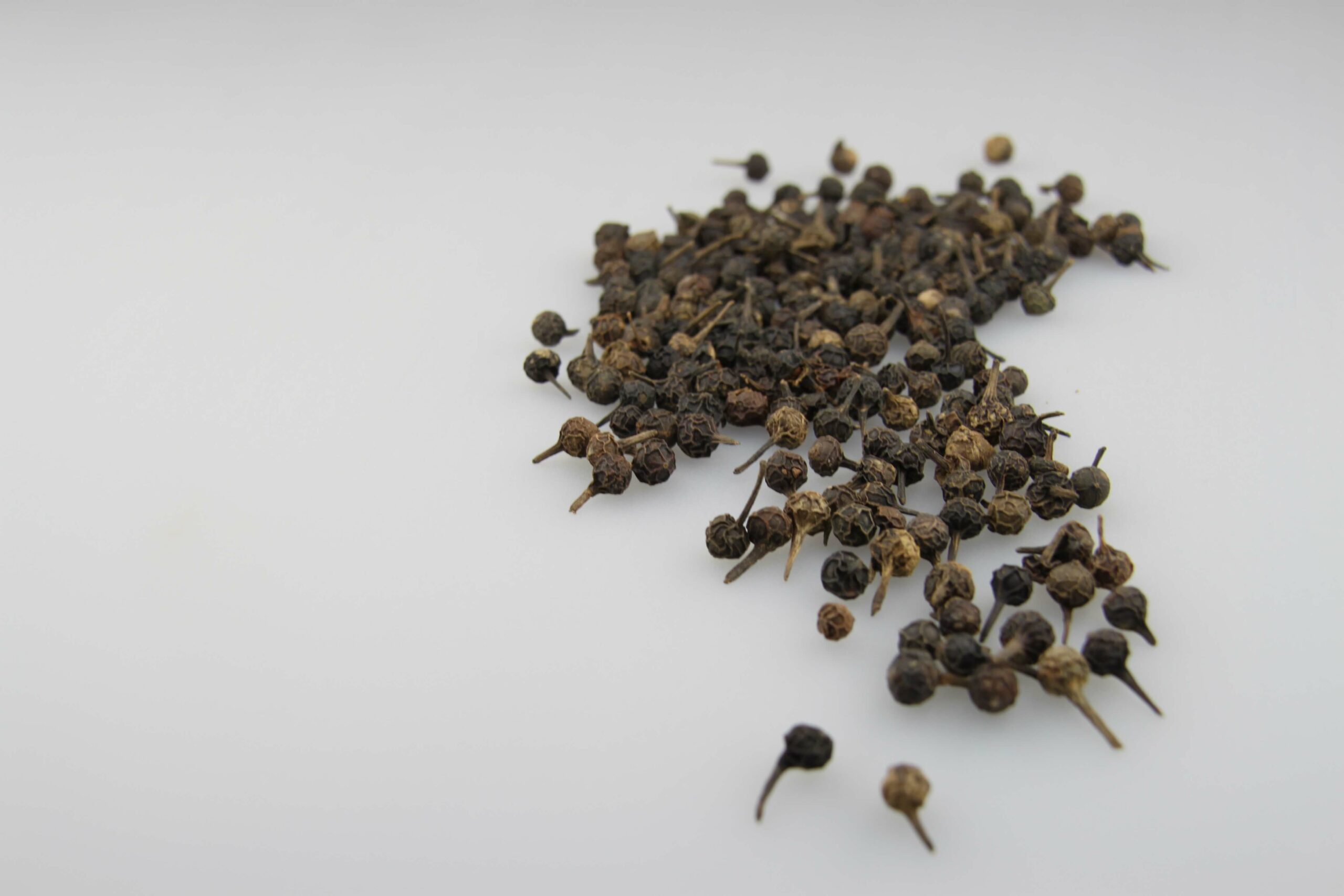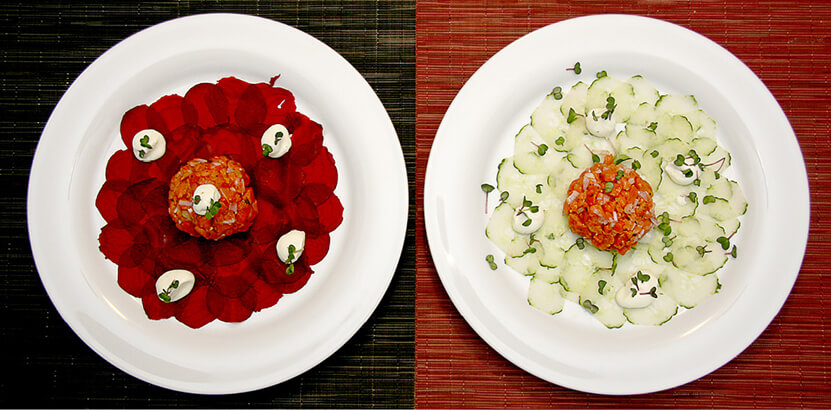Botanical name: Botanical family: origin: Classification: spice shape: flavor: odor: use: Tip: worth knowing: Recipe suggestion: botany: home & spread: cultivation & extraction: History: Cubeb pepper
General information
Use
Things to know

Piper cubeba L.
Pepper plants
Indonesia (Island Java)
spice
fruit
bitter, eucalyptus-like
aromatic, eucalyptus-like scent
Cubeb pepper is used in spice mixtures such as Ras el Hanout. Kubeben pepper is also suitable as an alternative to clove pepper. It is particularly suitable for seasoning meat and vegetable dishes.
Since ancient times Kubeben Pepper has been used as a remedy. It has an expectorant effect and is used to treat breathing difficulties.
Harvest: The fruits are harvested when still green. They are then dried in the sun until the berries have reached their deep black colour.
Wildnut with cubeb pepper sauce: Fry the wildnut in a frying pan with butter for 3-4 minutes. Then remove from the pan and keep warm. Sauté the shallots in the pan for 3-4 minutes. Pour some cognac over the shallots and let the alcohol boil off. Stir in some mustard, add some stock and let it simmer. Add a few cubes of peppercorns, some cream and a little salt. Bring to the boil well and then pour over the game.
The pepper plant is an evergreen climbing shrub and grows up to a height of 9 metres. It has dark green, oval, whole-edged, tapered leaves 7 to 15 cm long, with small, inconspicuous, white flowers grouped together to form a spike. After pollination, the flowers develop into single-seeded berry fruits, which change colour from green to a strong orange-red when they ripen. The fruit clusters then look very similar to redcurrant grapes. Each ear bears about 20 to 30 pea-sized berries.
The original home of the pepper bush is the warm and humid monsoon forests of Asia, especially the coastal forests of the Indian province of Malabar. Today, pepper is grown in many places in the tropics on both sides of the equator, mainly in India, Sri Lanka (formerly Ceylon) and Indonesia, but also in Thailand, Vietnam, Malaysia, the Congo basin, Sierra Leone, the West Indies and Brazil.
The pepper plant loves the warm and humid maritime climate of the tropics and usually remains below 500 m above sea level. There are two ways of propagation. One is by planting cuttings and the other by seeds. The first harvest is possible after 3 to 4 years if cuttings are propagated, but if propagated by seed, the first harvest can take place much later. The former is therefore the more common method. In the 7th or 8th year the plant reaches its full yield capacity, but the harvest capacity decreases considerably after the 15th to 20th year. Usually plants are replaced after the 10th year. Harvesting takes place twice a year. The interesting thing about pepper is that black and white pepper come from the same plant. The only difference is the time of harvest. In the case of black pepper, the unripe green berries are picked and then stored for a few days in large quantities for fermentation. The berries are then spread out on mats and dried in the sun until they become wrinkled and blackish-brown. In contrast to black pepper, white pepper is harvested only after ripening, i.e. shortly before the red colouring - at this point they are yellowish green - and then processed. The harvest is then filled into sacks and soaked in weakly flowing water for about 8 days, after which the skin is removed so that only the seeds remain. The remaining grey peppercorns are washed again and stored in the sun for several days to dry, giving them their creamy yellowish-white colour. In addition to black and white pepper, green pepper has been found in ever larger quantities for years. As in the production of black pepper, the unripe berries are harvested. These are either pickled in a salt or vinegar brine and preserved or dried in special processes.
Since ancient times, pepper has been used to season dishes. In more than 3000 years old Sanskrit writings of his Indian homeland he was described under the name Pippari. In the course of its spread it became the Greek Péperi, the Romans called it Piper, which became Pepper in England, Pepper in Germany and Poivre in France. Pepper probably first came to the Occident through Phoenician merchants. Later, in ancient Rome, it was one of the most precious and sought-after spices. During this period Alexandria became the most important trading centre for pepper. Long after that, the city-states of Venice and Genoa, together with the Arabs, established a fairly complete monopoly on the spice trade, but this collapsed almost abruptly when Vasco da Gama, sailing around the Cape of Good Hope which he named, discovered the sea route to India in 1498 and returned to Portugal with a rich cargo of the most precious spices. The Portuguese, for their part, built up a lucrative spice trading monopoly, and now Lisbon became the most important transhipment centre for spices and, after a short time, the richest port at that time. The Dutch finally brought this monopoly to an end when they drove the Portuguese from the spice islands and coasts around 1605. They immediately controlled the cultivation and trade of pepper and other spices themselves. It did not take long, however, before the cultivation of pepper in the Malaysian archipelago in particular had spread beyond Dutch control. With the increased supply, prices and profits fell more and more over the decades. Finally, pepper was no longer reserved for exclusive shifts.
http://de.wikipedia.org/wiki/Kubeben-Pfeffer







